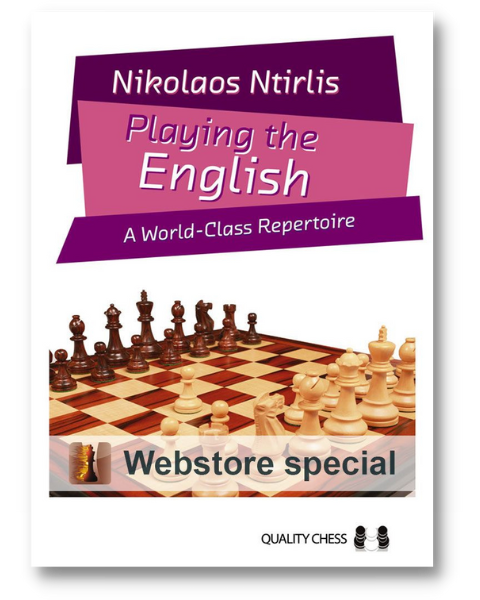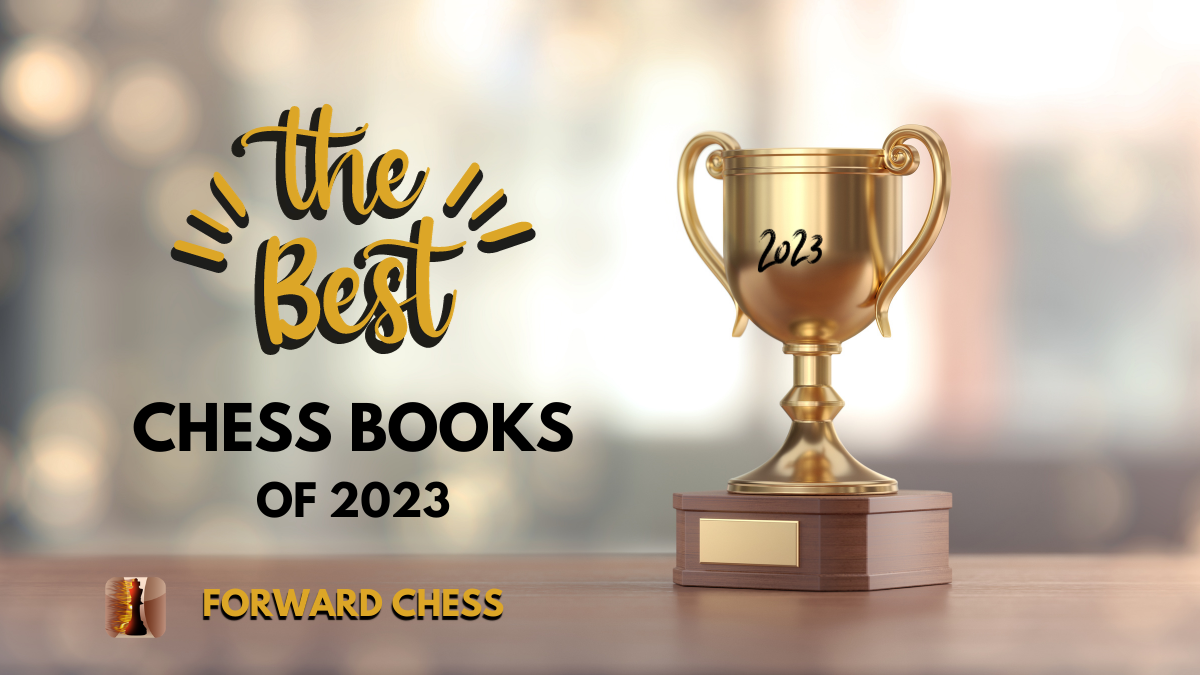2023 was a big year for chess – we got a new World Chess Champion, a reigning Women’s World Champion, and many amazing chess books that will be cemented in history! Here is our list of the best-performing books on Forward Chess in 2023:
- Playing the English by Nikolaos Ntirlis
- Rock Solid Chess by Sergey Tiviakov and Yulia Gokbulut
- Technique in Chess by Mark Dvoretsky and Artur Yusupov
- The Modern Gurgenidze by Jaan Ehlvest
Playing the English

“Playing the English” by Nikolaos Ntirlis is an in-depth exploration of the English Opening in chess. Ntirlis, known for his expertise in chess openings and analysis, offers comprehensive strategies, theoretical insights, and plans for responses to 1.c4.
The book focuses on understanding the opening rather than memorization, linking this to middle and endgame strategies. It includes detailed analysis using chess engines, model games, and opening trees. Ideal for serious players, the book presents a practical and versatile repertoire, demonstrating the opening’s effectiveness in human play. For a complete understanding, read more about the book on one of these Forward Chess blog posts:
Rock Solid Chess

Sergei Tiviakov’s book is a comprehensive guide on chess strategy, focusing on pawn structures. With his record of 110 consecutive unbeaten games, Tiviakov’s expertise is undeniable. Trained in the renowned Russian chess school (where he notes his influence by chess giants such as Smyslov and Petrosian), he definitely knows a thing or two about effectively studying chess, and uses his first book to impart knowledge about the foundation of chess strategy.
Rock Solid Chess stresses the importance of understanding middlegames and navigating different pawn structures, extending beyond mere opening theory and tactics. We can all surely name the different types of pawns and pawn structures, but understanding how to play the positions they create is something else. The book explores the following:

Chapters include strategic lessons, examples, and exercises drawn from Tiviakov’s personal experience, making it suitable for players ranging from club level to grandmasters. This personal element, along with questions posed throughout the chapters that make the reader stop and think, really engages you in the material. For example, this question comes up in the first chapter on Pawn majority:

Of course the answer is automatically hidden on Forward Chess readers, which allows you to spend proper time thinking and reflecting, without sneaking a peek.
Overall, the book has only received 5-star reviews, and it is not because of the super cool book cover, but the instructive content and engaging book structure.
Technique in Chess

“Technique in Chess,” developed from Mark Dvoretsky’s files by his former student Artur Yusupov, offers a profound understanding of chess technique. It starts with a theoretical section and progresses to 102 practice positions of increasing difficulty, encompassing openings, middlegames, and endgames. The book is detailed, explaining main and side variations, and the logic in decision-making.
It’s an homage to Dvoretsky, with Yusupov respectfully continuing his legacy, benefiting learners from club to grandmaster levels in mastering the art of converting advantages. Yusupov’s detailed commentary offers insights into decision-making processes, illustrating the journey from a good position to a winning advantage.
Let’s take a quick look at an example from the book, from the chapter “Realizing a Material Advantage”. In the notes, Yusupov writes the following:

And the second strategy follows shortly after:

Then we get this position which speaks to the second strategy:
How would you continue here as Black?
Dvoretsky is known in the chess world as one of the best coaches (and authors), and this book stands testament to his influence in chess even after his passing.
The Modern Gurgenidze

In the modern world of chess engines, opening theory and preparation has become increasingly complex. Perhaps this is why players are opting for unconventional openings and lines. Enter The Modern Gurgenidze, a repertoire based on 1…g6.
Although 1…g6 is not as wild as 1…a6 (St. George Defense) or 1…f6 (Barnes Defense), it still goes against basic opening principles of controlling the center from the get-go. The Modern Gurgenidze is a provocative defense and can be played against basically everything.
Ehlvest shares his expertise on this opening (which he successfully employs himself), advocating for a counterpunching approach rather than playing for a draw. The book, rich with theoretical chapters and sample games, guides players on how to play this aggressive line, and although it might not be the easiest opening to play, they are even more difficult to play against. So, buckle in, and update your repertoire with this venomous weapon.

Intrigued, and want to get to know more about this book? Read this blog post where Jaan Ehlvest talks about it himself.
What was your favorite book released on Forward Chess in 2023? Let us know in the comments!
Puzzle Solution
- Rock Solid Chess: Volume 2 - February 21, 2024
- Unsung Heroes of Chess - February 19, 2024
- Build Up Your Chess: The Fundamentals - February 7, 2024



